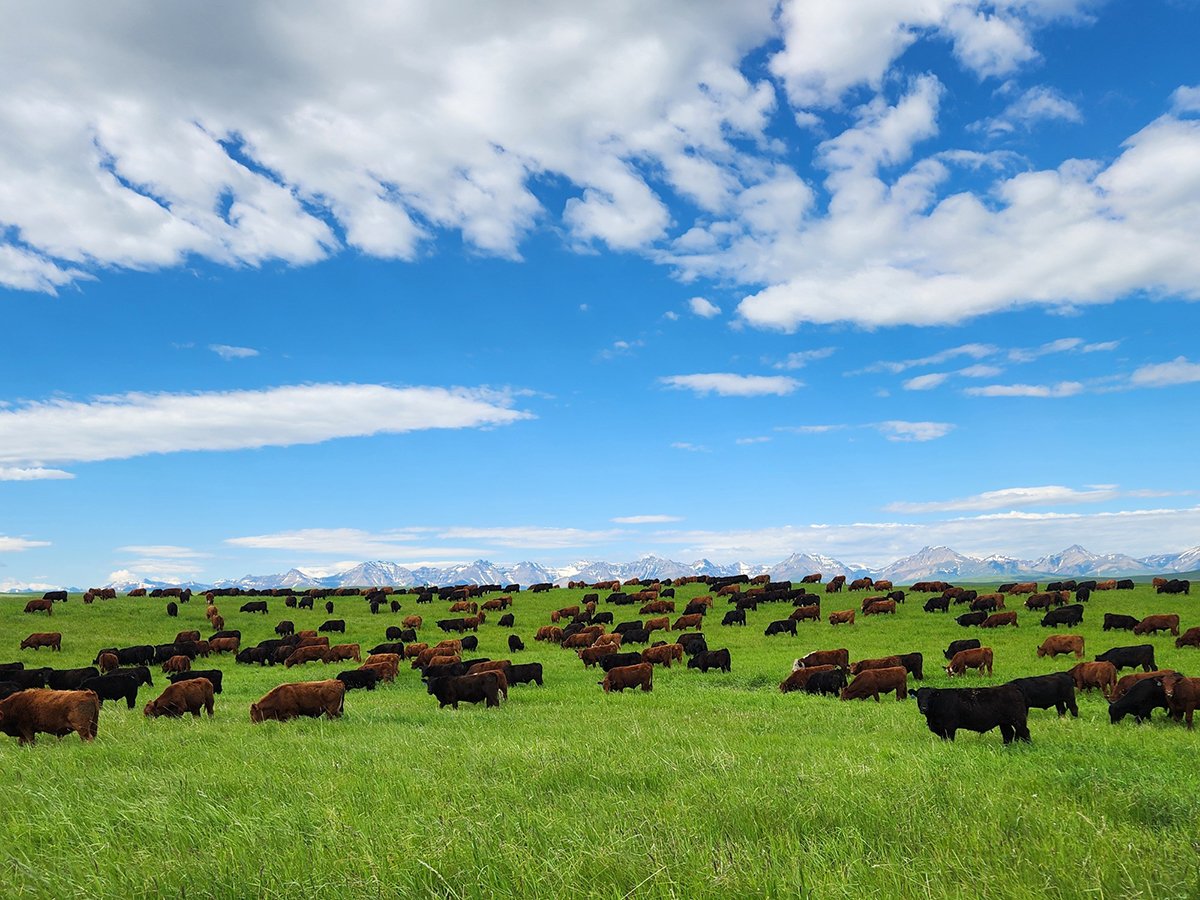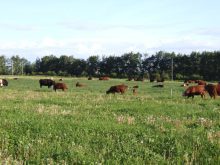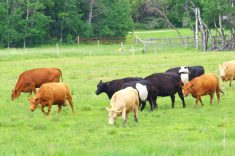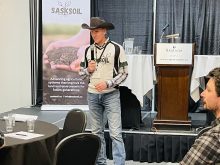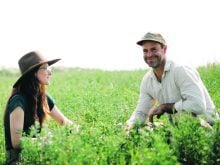For decades, the Toews family has been following regenerative principles on their ranch, and now the second generation has bought into the approach.
Galen and Gwen Toews run Fishburn Ranch near Pincher Creek, Alta. They began their ranching journey in the early 1990s by buying some unproductive land.
Galen grew up on a small dairy farm, where he noticed how much healthier headlands and ditches were compared to adjacent cropland. He also wondered what was going on in areas where farmers skipped spraying and fertilizing.
Read Also

Quebec pork company calls for transparency around gene-edited pigs
Quebec-based pork company duBreton is calling for transparency around meats from gene-edited pigs on concerns that a lack of mandatory labelling will confuse consumers, and dilute certification claims. The organic sector is also calling for labelling rules.
“Even as a young boy or teenager, I was interested in what was real and the reasons nature responded the way it did.”
At about age 20, he found Allan Savoury’s work on reversing desertification and restoring grasslands.
The Toews took their first holistic resource management course in 1992. They also started following ag economist and Ranching for Profit founder Stan Parsons around that time.
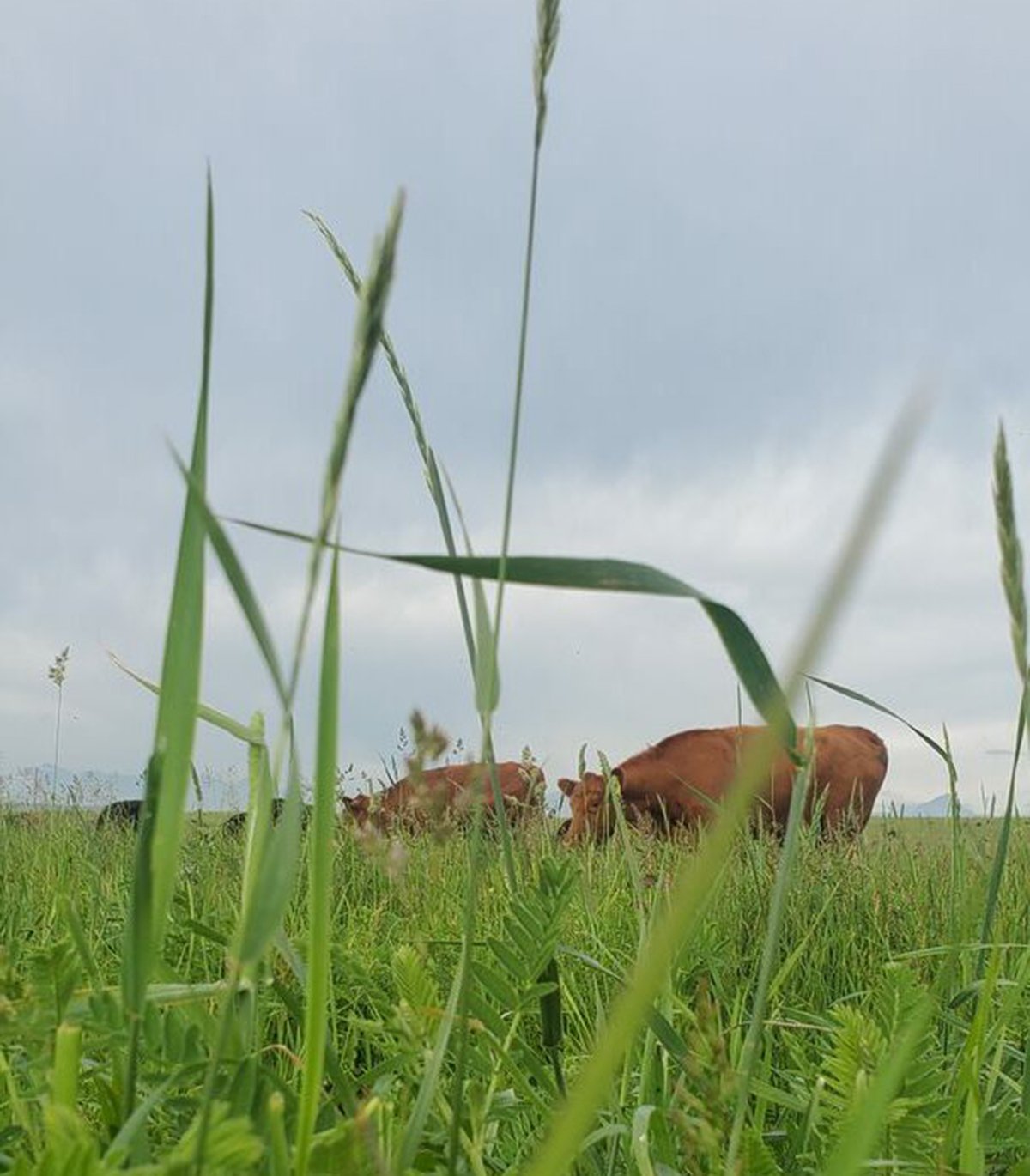
Much of the ranch was dirty stubble ground or monoculture pasture when they first started grazing it, and the average soil organic matter was around one per cent. There was little topsoil left, and every low spot was a pond or slough because there was little water-holding capacity.
Today, the soil organic matter consistently tests near 10 per cent, and the sloughs have turned into lush pastures. More than 20 forage species are growing, many of which were never seeded but were part of the soil seedbank waiting for the right conditions. The animal carrying capacity has increased three or four- fold. All of this was done without the use of commercial fertilizers or chemicals, and minimal seeding.
Galen credits regenerative grazing practices and holistic management decisions for getting the ranch through BSE and droughts in the 2000s. This approach was used out of necessity to survive and a desire to work with nature, he says.
Sons Casey and Regan were introduced to the ranch’s management from a young age.
“The holistic mindset was always there when we were growing up. When Dad went to learning events, me and my brother always tagged along,” says Casey.
The management approach adopted by his parents has allowed them to be in a unique position today with their herd genetics, grass-fed beef and land management services.
They prioritize investment in water and fencing infrastructure to continue to support the grazing. Generally, their place is divided into 20-acre permanent pastures that each have access to a year-round water trough. Temporary fences break them into smaller paddocks.
Plant recovery periods change from June to July and August as growth slows. They continually observe plant recovery, waiting until plants reach the three-leaf stage before grazing again.
Recently they’ve followed the total grazing approach, which means high stock density and severe grazing, followed by lengthy recovery time. They wanted to do it at a scale that could justify a full-time employee, so they total-grazed 650 custom yearlings, closely watching gut fill and disposition while moving four times per day to achieve the desired harvest efficiency.
The Toews family has incorporated a mix of enterprises, including cow-calf and yearlings, custom and owned.
Bale grazing in the winter has allowed them to make significant improvements to the land, and they offer custom winter cow feeding to increase this effect. They feel confident they can breed productive animals that will maintain condition while grazing year-round with minimal supplementation.
DNA testing on their home-raised bulls has shown that this approach provides top scores in marbling, disposition and longevity traits.
Casey and his wife, Jaclyn, have started a direct-to-consumer beef enterprise that has grown significantly in the last few years.
“It was a natural fit to what we were already doing,” he says.
Fishburn Ranch recently participated in a nutrition study conducted by the Massachusetts-based Bionutrient Food Association and Stephan van Vliet of Utah State University. Researchers tested hundreds of samples from across North America.

“We sent them ribeye steaks, forage, soil and manure samples, and they did a deep dive into over 150 nutrients and how soil health and management impact nutrient density,” says Casey.
The omega six to three ratio is a common nutrition metric. The more even the ratio, the healthier the diet. However, the standard American diet is extremely high in omega six, which causes inflammation when it is out of balance.
Toews said the beef tested in the study had an average ratio of 7:1, but their beef tested at 1.4:1
“The major finding of the study was that beef from cattle raised on healthy soil that supports multiple species of grass was significantly more nutritious. More plant species equals nutrient density. This was a bigger factor than breed, age or organic (versus conventional).”
The direct marketing business is a separate enterprise and purchases cattle at fair market value from the cow enterprise, which they hope can provide some stability long term as markets cycle.
As demand has increased, they have started sourcing animals from other ranches that run similar programs.

